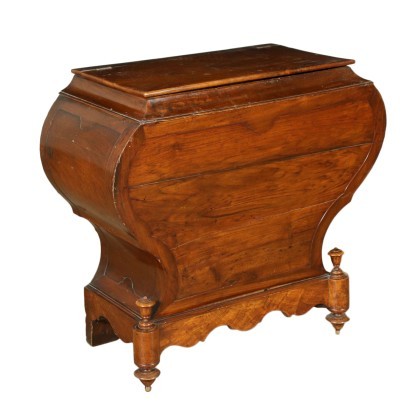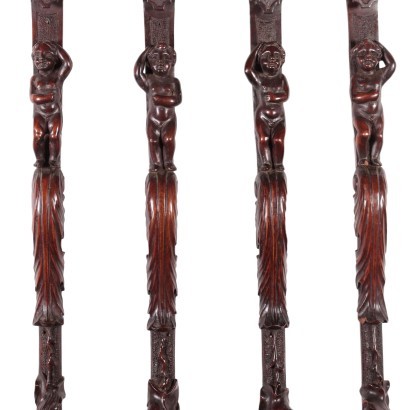Sideboard Second Quarto XIX Century
Features
Age: 19th Century / 1801 - 1900
Origin: Italy
Description
Sideboard second quarter of the nineteenth century, resting on feet of which the front ones turned and spinning top. The body is strongly shaped, the upper shelf can be opened and gives access to the internal compartment. In walnut, the interiors are in pine.
Product Condition:
Product in fair condition showing some signs of wear.
Dimensions (cm):
Height: 73
Width: 79
Depth: 39
Additional Information
Age: 19th Century / 1801 - 1900
19th Century / 1801 - 1900Main essence:
Walnut
Walnut wood comes from the plant whose botanical name is juglans regia , probably originally from the East but very common in Europe. Light or dark brown in color, it is a hard wood with a beautiful grain, widely used in antique furniture. It was the main essence in Italy throughout the Renaissance and later had a good diffusion in Europe, especially in England, until the advent of mahogany. It was used for solid wood furniture and sometimes carvings and inlays, its only big limitation is that it suffers a lot from woodworm. In France it was widely used more than anything else in the provinces. In the second half of the eighteenth century its use decreased significantly because mahogany and other exotic woods were preferred.Pine
The term pine wood indicates the essence from various species of conifers, especially Scots pine, maritime pine and pinea pine. Used since ancient times for the most common furniture, with the advent of the veneer technique, in the 1600s, it was widely used in the construction of the structure of even luxury furniture, which were then covered, decorated (in Venice) or gilded ( in England). It has a color that varies from white to yellow with reddish hues and can be both very soft and very hard. It could also interest you





















